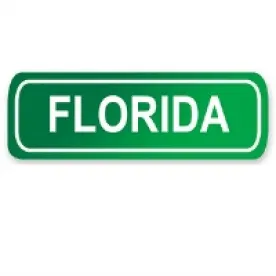On August 18, 2020, the United States Court of Appeals for the Eleventh Circuit affirmed a District Court’s 2018 ruling that Sparta Insurance Company need not cover a south Florida restaurant’s lost income and extra expenses resulting from nearby road construction. But, in doing so, the appeals court appears to deviate from even its own understanding of “direct physical loss” under controlling Florida law.
In the underlying coverage action, the insured, Mama Jo’s Inc. operating as Berries in the Grove, sought coverage under its “all risk” commercial property insurance policy for business income loss and incurred extra expenses caused by construction dust and debris that migrated into the restaurant.
The district court found that Mama Jo’s did not demonstrate the “direct physical loss” or damage required under its insurance policy. The district court reasoned that “direct physical loss contemplates an actual change in insured property then in a satisfactory state, occasioned by accident or other fortuitous event directly upon the property causing it to become unsatisfactory for future use or requiring that repairs be made to make it so.” As a result, the district court determined that direct physical loss did not occur since Mama Jo’s could clean the construction dust from its property and did not cease its operations.
The Eleventh Circuit affirmed the district court’s ruling with respect to whether Mama Jo’s suffered “direct physical loss.” In doing so, the panel attempted to assign meaning to the phrase “direct physical loss” by looking to dictionary definitions and prior case law addressing the phrase’s component terms. Relying on Black’s Law Dictionary, rather than a source that might supply a common everyday meaning, the panel determined that a “loss” is “the diminution of value of something.” The panel then relied on Florida appellate decisions to ascertain the effect of the terms “direct” and “physical,” concluding that those terms modify “loss” and impose the requirement that the damage be actual. However, the panel never ascertained the plain meaning of these undefined terms. Indeed, Florida courts have held that the plain meaning of “direct physical loss” is broader than losses that harm the structure of covered property and includes situations in which covered property becomes “uninhabitable” or substantially “unusable.” See e.g., Azalea, Ltd. v. American States Ins. Co., 656 So. 2d 600 (Fla. 1st DCA 1995) (finding “direct physical loss or damage” where the release of an unknown substance into a sewage treatment plant caused the plant to shut down, even though structure was not visibly altered); Three Palms Pointe, Inc. v. State Farm Fire & Cas. Co., 250 F. Supp. 2d 1357 (M.D. Fla. 2003) (finding that direct physical loss includes more than losses that harm the structure of covered property). In fact, even the district court in the instant action acknowledged the more expansive meaning of “direct physical loss or damage” despite ultimately determining that Mama Jo’s failed to meet the standard since it never ceased its operations as a result of the construction dust.
However, notwithstanding that the phrase “direct physical loss,” when read consistent with the meanings ascertained by the panel, should require only actual diminution in value, the panel went on to conclude that Mama Jo’s must show that its property sustained “an actual change in the insured property” to demonstrate “direct physical loss.” But this is entirely inconsistent with the panel’s own definitions, which speak only to a loss of value, not a physical alteration to the property. Thus, the Eleventh Circuit’s decision in Mama Jo’s seemingly fails to follow even the court’s own reasoning, much less Florida law.
Furthermore, Mama Jo’s focuses on a specific set of facts where the insured alleged that the cause of loss was construction dust that could easily be cleaned from the property. These allegations do not parallel those in well-pled COVID-19 claims, which specifically allege the challenges of detecting, removing or preventing exposure to COVID-19. Unlike dust, which is readily detectable visually, COVID-19 cannot be seen with the naked eye, and there is no known means of testing property (as opposed to people) to determine whether the virus is present. In fact, it is clear that COVID-19 is present in almost all property due to the pandemic. Due in part to these significant differences between dust and COVID-19, Mama Jo’s contained no allegations akin to those in well-pled COVID-19 cases concerning the lack of any readily-available property testing. In fact, one of the central issues in Mama Jo’s concerned the proffered experts’ apparently flawed decision to not test the affected property to determine conclusively whether the dust actually resulted from the earlier roadwork. Finally, unlike Mama Jo’s, which continued to operate its business without disruption or interruption despite the construction dust, COVID-19 and resulting civil authority orders have forced thousands of insureds to close their doors, thereby depriving the insureds of their properties’ intended use and rendering the properties substantially unusable.
Despite the clear distinctions between the dust in Mama Jo’s and the present COVID-19 pandemic, the Mama Jo’s decision is likely to be praised by insurers as a “win” in support of the insurance industry’s uniform ongoing refusal to cover COVID-19 business income losses. As the distinctions discussed above make clear, however, Mama Jo’s should be limited to its facts and, even then, approached with caution and skepticism given its apparent internal inconsistencies and its overt failure to comport with Florida law.






 />i
/>i
